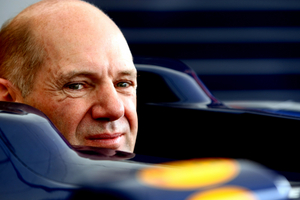|
Send this page to a friend! Fill in the form bellow | ||
news
Newey Says 2013 Car Harder to Develop
Nearly no rules changes mean cars are mostly developed
When was the last time we saw a Formula 1 season that did not have major rules changes between seasons? Next year, the only major rule change is an increase to the cars' minimum weight that will be offset by heavier tires anyway. That means that all of the development on the cars will carry forward into the new season. According to Red Bull Red BullAustria, 2004 > present12 models
Red BullAustria, 2004 > present12 models
1049 photos
3 videos
Chief Technical Officer Adrian Newey, that is somewhat of a problem. Improving the cars for next season is going to be very difficult.
What is more, the basics of these rules were established in 2009, although they have been tweaked since then. Next year's cars will likely be the fastest that the rules can possibly allow.
"It is increasingly difficult because there are no real regulations changes compared to this year and it will be the fifth season since the 2009 rule changes. The field is converging and you can see how competitive it is in the fact that we had eight different winners this year," said Newey.
Next year's tires will might make competition even tighter. Early rumors indicate that the FIA wants Pirelli to create tires with an even shorter duration of peak performance for next season.
"The tires have been talked about a lot and they are important and each car will work its tires slightly differently compared to its competitors. Sometimes, a particular track layout and temperature might suit a particular car more than its immediate rivals,” said Newey.
Newey says to expect an evolutionary step for next year's RB9 rather than a revolutionary jump.
"There will be no surprises, next year's car will be very much an evolution of this year's," he said.
Source: Autosport
Encyclopedia | Engine V 8 (90º vee) Displacement 146 cu in Top Speed -- Transmission 7, semi-automatic Maximum power 761 hp Type Single Seater Fuel Petrol Fuel consumption (combined) -- | price -- annual ownership cost -- |
Contribute
more about Red Bull



latest news










